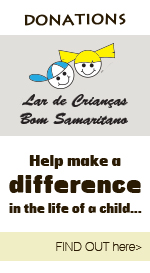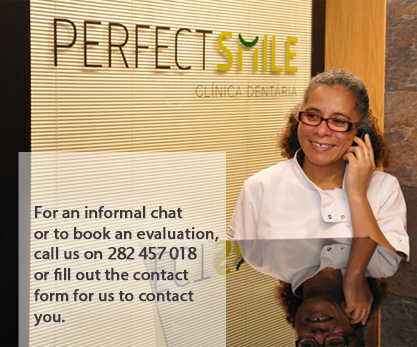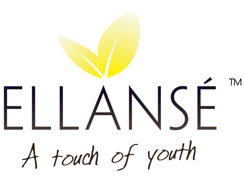 Laser & Light Therapy
Laser & Light Therapy
Lasers and light sources used for non-ablative photorejuvenation could be classified based on their wavelengths into: i) yellow to green light, ii) systems emitting broad band light and iii) those emitting light in the infrared range (infrared lasers target pigment, hemoglobin and water).
Vbeam Pulsed Dye Laser. Pulsed dye lasers (PDL) emit yellow light at 585–595 nm, which selectively targets hemoglobin and melanin. This wavelength permits a 50% dermal penetration with 400 μm depth, and is exclusively absorbed by blood vessels. Thus, enhancing the release of inflammatory mediators from endothelial cells within the targeted vessel with subsequent stimulation of fibroblast activity to produce new collagen.
Many studies suggested the potential role of PDLs in the treatment of photodamaged skin by the clear clinical and histologic improvement seen with PDL-treated patients. Improvement in the appearance of wrinkles has been observed following exposure to short pulsed 585 nm laser light at low energy levels (2–3 J/cm2). Longer pulses theoretically allow more heating of larger capillaries with less risk of purpura, thus reducing the downtime.
Despite approval by the US FDA for treating photodamage with the PDL, only modest results have been observed with these wavelengths, presumably because of predominantly vascular targeting and superficial penetration to the papillary dermis.
Q-switched (QS) Nd:YAG (532 nm & 1064 nm (infrared spectrum)), QS Pigment-specific Lasers. Pigment-specific lasers are used to treat the pigmentary changes that occur with photodamage, including solar lentigines, ephelides or freckles.
The frequency doubled Nd:YAG laser emits radiation with a wavelength at 532 nm and a pulse duration in nanoseconds. The use of QS lasers in the treatment of pigmented lesions follows the principle of selective photothermolysis thus limiting the damage to the melanosome-containing cells. However, at 532 nm, the wavelength is absorbed not only by melanin but also by hemoglobin.
Light Emitting Diode. Light-emitting diodes (LEDs) emit a narrow band of electromagnetic radiation, measured in milliwatts, ranging from the UV to the visible and infrared wavelengths. They can be classified as emitting wavelengths between lasers and broadband light. An array of LED with dominant wavelength of 590–980 nm is used for treatment of photoaged skin. More specifically, they produce pulses of low energy, non-laser and non-thermal light that modulate the biologic activity of keratinocytes and fibroblasts by affecting the mitochondria, increasing collagen production.
LEDs are typically assembled on small chips or equipped with tiny lenses put together into small lamps, LED is safe for all skin types and is fast and convenient to use. Although the biological effects on skin cells seem to be evident (wound healing, reduction of chronic and acute actinic damage), clinical results of skin rejuvenation obtained simply with LED photomodulation are not particularly convincing either on skin tonus or on wrinkle reduction.
Nd:YAG Laser, 1064 nm Long Pulsed & Short Pulsed Q-switched. The long pulsed Nd:YAG emits energy in infrared spectrum at 1064 nm with extended pulse duration. The laser results in diffuse heating of dermal tissue caused by the deeply penetrating nature of 1064 nm, which has an optical penetration depth of 5–10 mm. The chromophores for the 1064 nm laser are, in decreasing order, melanin, hemoglobin and water. Water weakly absorbs laser energy at this wavelength and is gently heated; however, severe heating remains localized to hemoglobin and melanin.
QS 1064 nm Nd:YAG is one of the first lasers used for non-ablative skin rejuvenation. Its long wavelength and ultra-short pulse duration of nanosecond, allow penetration of the papillary dermis with subsequent dermal wounding and limited thermal diffusion to the proposed target. Multiple treatments are required to attain best results.
Facial telangiectasia (spider veins) and mild photodamaged skin are main clinical indications.The QS 1064 nm Nd:YAG laser could be also used for treating pigmentary changes beside vascular changes that occur with photodamage, because it highly targets melanin within dermal melanocytes. Meanwhile, side effects include mild erythema in all patients (lasting from 1 to 2 h), purpura, rarely post-inflammatory hyperpigmentation and temporary hypopigmentation, can be avoided by using lower fluencies.
CO2RE Fractional Lasers. Fractional photothermolysis is a novel technology for skin rejuvenation that can be considered intermediary between ablative and non-ablative resurfacing; it could be achieved with non-ablative and ablative modalities.
True non-ablative fractional laser requires three criteria:
- non-ablative mode of tissue coagulation, with preserving the stratum corneum,
- creation of multiple microthermal zones (MTZs) surrounded by islands of viable tissue and
- resurfacing with extrusion and replacement of damaged tissue, with re-epithelialization within 24 h.
With this technology, fractional lasers are employed creating thousands of tiny treatment zones on the skin, microscopic columns of thermal injury (microthermal zones), the depth of penetration ranges from 300 to 700 μm based on fluencies. The target chromophore for the fractional laser is water; however, treatment is performed in a pixilated fashion, leaving approximately 70% of the skin undamaged to promote rapid healing. The wound-healing response differs from that of other techniques because viable cells exist between treatment zones, including epidermal stem cells and transient amplifying cell populations. Each laser hit produces a 30–70 μm plug of microscopic epidermal necrotic debris that naturally exfoliates in approximately 14 days.
Relative epidermal and follicular structure sparing is responsible for rapid recovery without prolonged downtime. Melanin is not at risk of selective targeted destruction; therefore, fractional resurfacing has been used successfully in patients with dark skin color. Dermal effects of microthermal zone repair generate wound mediators that ultimately lead to remodeling of the dermal matrix and histologic demonstration of enhanced rete ridge which enhance skin rejuvenation.
Ablative fractional modalities are laser systems using an ablative laser (carbon dioxide) pulse that only hits a fraction of the skin at each pulse. This allows many skip areas in between the MTZs to quickly re-epithelialize the wounded skin. MTZs allow delivery of high local irradiance to achieve efficacy while maintaining low overall irradiance to prevent side effects. Unlike non-ablative fractional photothermolysis, these devices cause true ablation of the epidermis in addition to variable depths of ablative damage to the dermis.
The combination of epidermal and dermal ablation appears to lead to a more robust wound-healing response and accompanying dermal fibrosis, which may explain the rapid and significant clinical effects that can be achieved with ablative versus non-ablative devices.
Complications with non-ablative fractional laser resurfacing are rare and generally self-limiting. Prolonged erythema has been reported with higher fluencies, but generally resolves. Microthermal zone pattern persistence can occur and usually resolves within 2–3 weeks.









